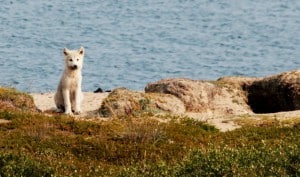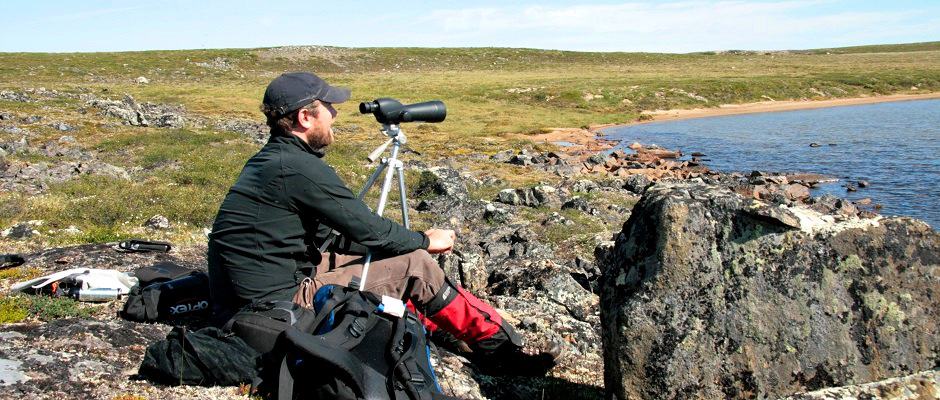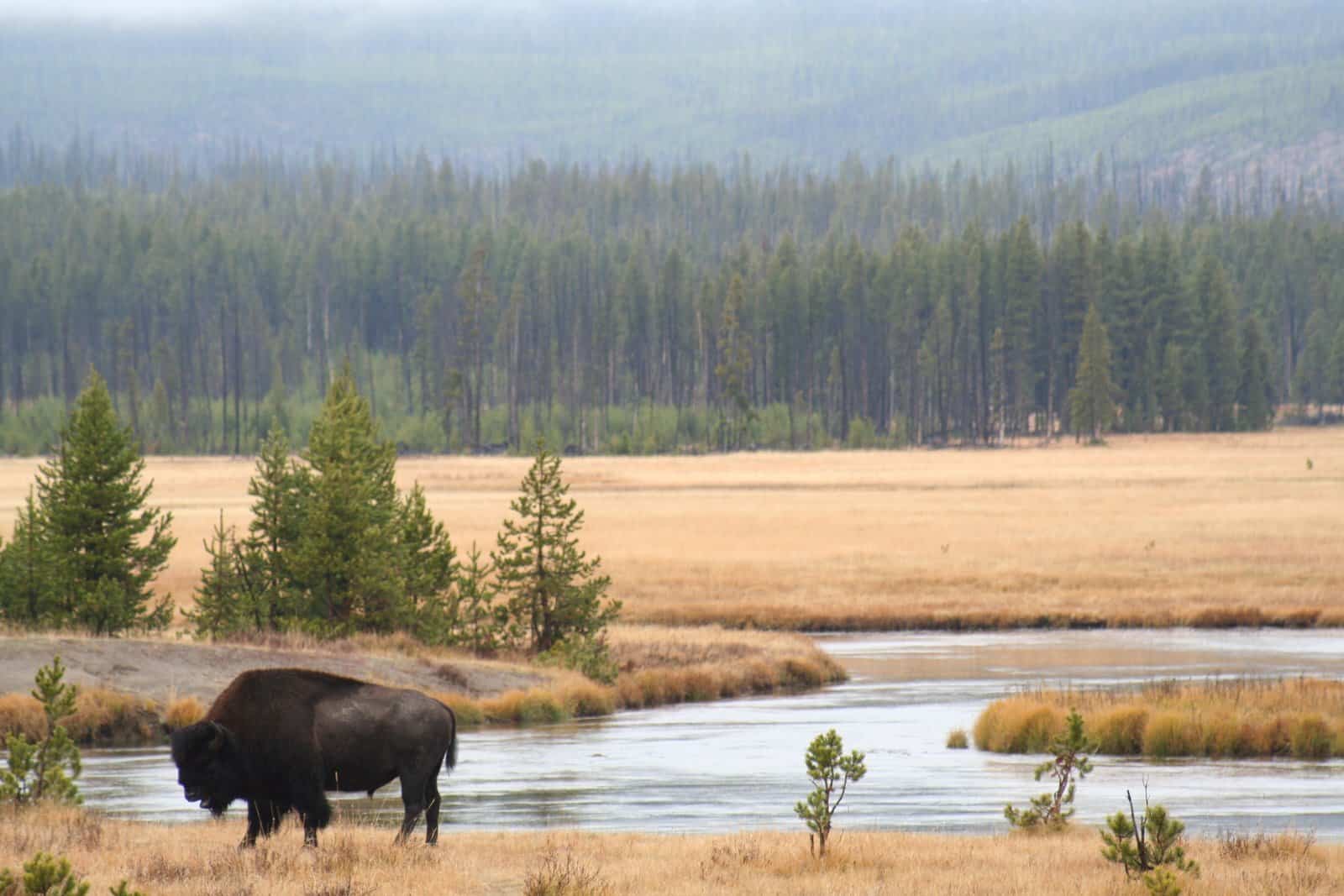Share this article
JWM Study: Declining caribou means less prey for wolves
Since the mid-1990s, the Bathurst herd of barren-ground caribou (Rangifer tarandus groenlandicus) in the central Canadian Arctic declined by over 90 percent, leading researchers to question how this drastic drop in numbers impacts caribou predators, specifically the tundra wolf (Canis lupus).
“There’s a unique system there where the wolves are migratory,” said Michael Klaczek, a wildlife biologist with the Government of British Columbia and a member of The Wildlife Society. “The predator-prey dynamics in the central Arctic are different than in forested or mountain ecosystems in southern Canada or in the U.S in which wolves maintain annual territories and hunt a more diverse and resident ungulate prey base,” said Klaczek , who is the lead author of a recent study that examined this predator-prey relationship. The study was published in the Journal of Wildlife Management.
Prey for wolves in the Arctic is scarcer, and tundra wolves migrate hundreds of kilometers each year, along with the caribou, between winter ranges in the boreal forest up to their summer ranges on the Arctic tundra. A separation occurs, however, from May to August when the caribou move farther north to their calving ranges near the Arctic coast while most wolves remain farther south within their denning areas near the tree line caring for newborn pups, he said.
As part of the study, Klaczek — who was working on the study as part of his master’s degree at the University of Northern British Columbia — and his colleagues, looked at long-term data sets for both wolves and caribou collected by the Government of the Northwest Territories on the Bathurst summer range from the mid-1990s to 2012. In general, the researchers found that pup numbers appeared to decrease from the late-90s — around the same time caribou numbers began to decline. They also noticed an increase in the number of abandoned dens over the same period. “We didn’t know whether wolves were moving their pups to a new den or rendezvous site or if they lost their pups,” he said.

A tundra wolf pup near its den site during a ground-based survey on the Bathurst barren-ground caribou range in late August. ©Mike Klaczek
The researchers deployed GPS collars targeting the breeding female wolf from individual packs since the females stay with their pups during the denning period. Movement data from these females allowed the researchers to follow the wolf packs over the summer and assess pup survival. In 2013 and 2014, they completed aerial and ground-based surveys to estimate the number of pups recruited in late summer — the time when pups are old enough to travel and hunt with the pack. “We found that pup recruitment was low on the Bathurst range. At low caribou abundance, pup numbers were not replacing adult wolves in the population resulting in a population decline,” he said.
Using location data from caribou with satellite collars and the aerial survey data documenting the location of wolf dens over the study period from 1996-2012, Klaczek found that den sites were located at progressively greater distances from the caribou summer ranges as the caribou herd declined. “Not only was there a significant decline in caribou abundance over the study period but the summer distribution of caribou contracted away from the denning areas of wolves resulting in fewer caribou in the vicinity of the den sites for longer periods of the summer.”
All this points to a relationship between fewer caribou for the wolves to prey on during the summer and a decline in wolf pup recruitment and ultimately wolf density. “This suggests that the tundra wolf population is regulated by the dynamics of caribou,” said Klaczek. According to Klaczek, the study provides further insight into the wolf-caribou dynamics in a migratory setting. “These findings aren’t necessarily surprising based on the wolf-prey literature. But in this more remote migratory system, it wasn’t that clear before how or if wolves would respond, and some have questioned the role of wolf predation in perhaps limiting the ability of barren-ground caribou herds to recover from low numbers.”
Klaczek says the wolf numerical response and a low wolf density in the region is good news for caribou managers. Fewer wolves should mean more opportunity for the declining caribou population to recover, however, there still is some uncertainty around predation and whether it interacts with other factors that may influence caribou population growth. “Our study highlights the value of long-term monitoring of both predators and prey and highlights the excellent data sets that were collected in this remote area over the period of caribou decline that allowed us to look into that relationship further,” he said.
Header Image: Mike Klaczek monitors a wolf den on the summer range of the Bathurst barren-ground caribou herd. The treeless tundra allowed dens to be monitored from a distance on the ground or from the air. ©Mike Klaczek








